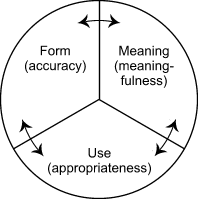
GRAMMAR LESSON
(sa and ng phrases and pronouns)
![]()
The difference between ng-possessive phrases and sa-possessive phrases:
| Thing possessed | Possessive Marker | Possessor |
| (ang) bahay | Ng | Titser |
| (ang bahay | Ni | David |
| (ang) | Sa | Titser |
| (ang) | Kay | David |
Note that while the ng or ni phrase can not stand alone, the sa or kay phrase can be independent. The ng or ni phrase follows and is linked to the possessed word, e.g., Bahay (possessed word) ng titser (possessor) ito or Maganda ang bahay ng titiser, but NOT ng titser ito or Maganda ang ng titser.
With the sa phrases, the possessed word need not be expressed at all, and the phrase itself normally stands alone as either predicate or topic, e.g., Sa titser ito or Maganda ang sa titser.
![]()
| Sa pronouns | Ng pronouns | |
| Singular | ||
| 1st person | Aking damit | Damit ko |
| 2nd person | Iyong damit | Damit mo |
| 3rd person | Kaniyang damit | Damit niya |
| Plural | ||
| 1st person | Aming damit | Damit namin |
| 2nd person | Inyong damit | Damit ninyo |
| 1st and 2nd person | Ating damit | Damit natin |
| 3rd person | Kanilang damit | Damit nila |
If the word possessed is used in a sa phrase, the sa pronouns precede the word they modify and must be linked to this word by the linker –ng. They may occur independently as either predicate or topic (subject). The marker sa is optional with sa pronouns. The marker is usually omitted.
Like the ng- possesive phrases, the ng possessive pronouns are always attributive. They always follow the word they modify without a linker. Ng (linker) never occurs with the ng pronouns.